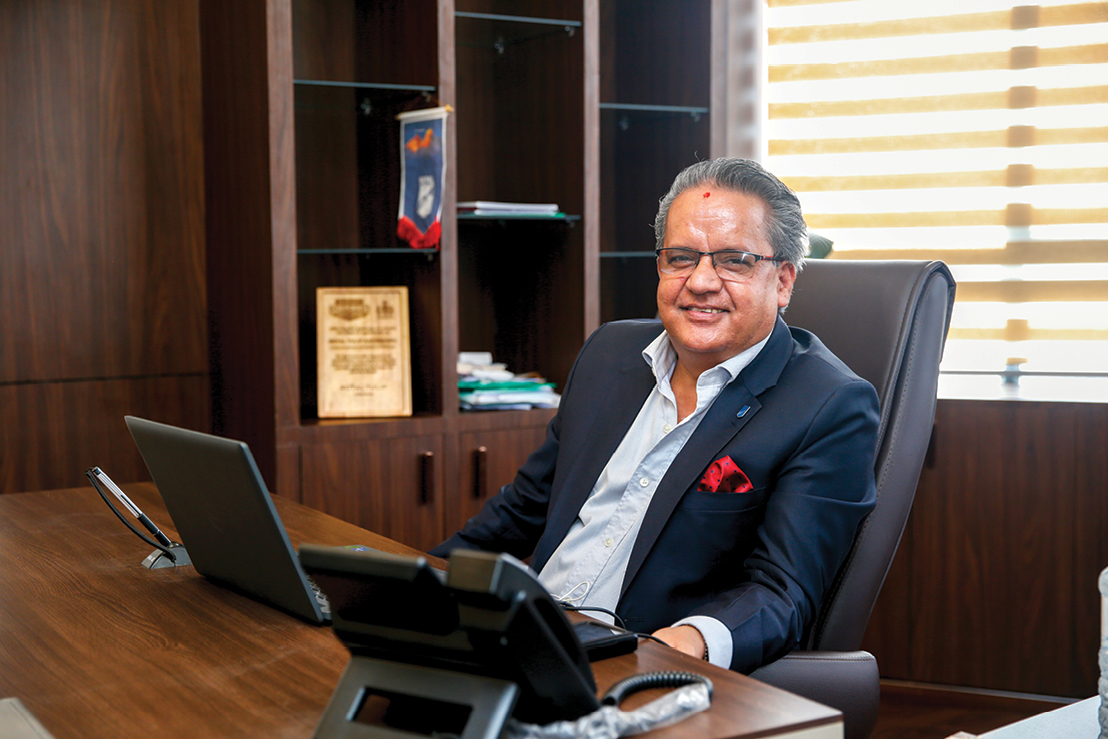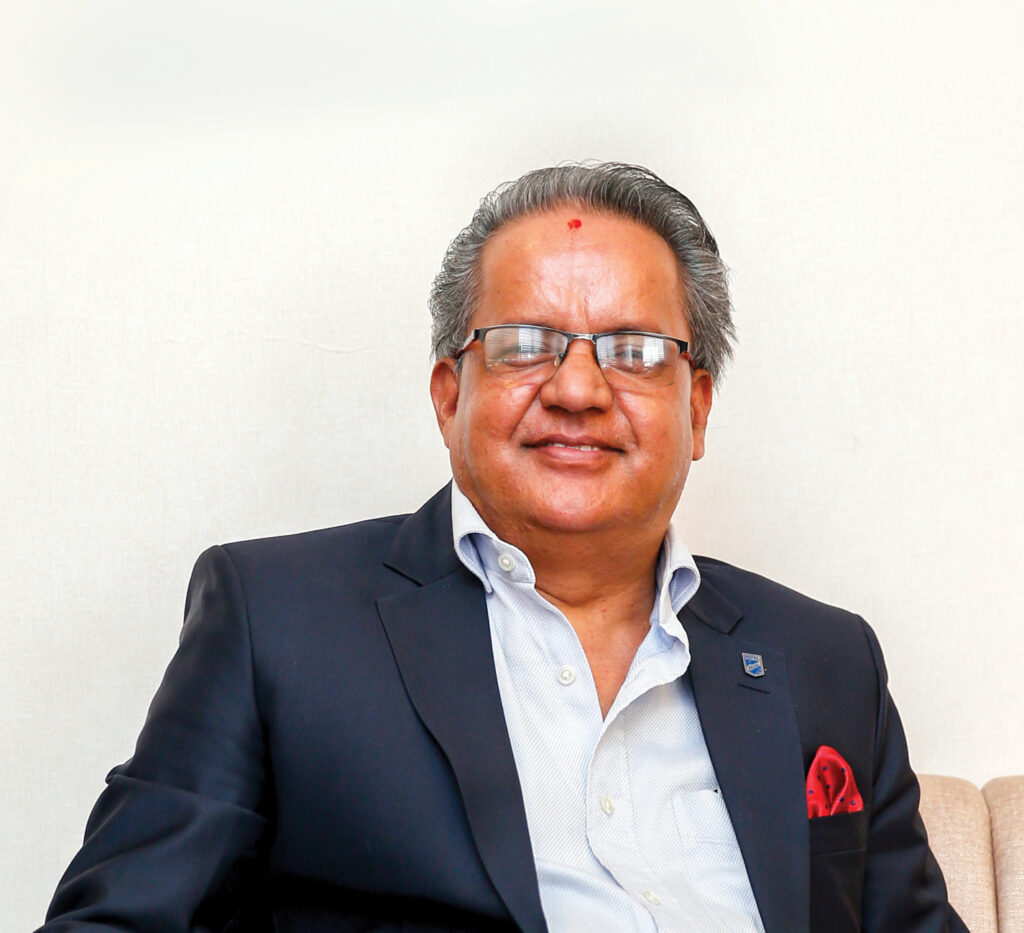Balaram Pathak | General Manager, Royal Tulip Kathmandu
 My first job was more than just employment; it was the foundation of my entire career. I still remember the nervous excitement of stepping into the hotel lobby on my very first day. The professionalism, the fast pace, and the sense of responsibility were overwhelming, but also thrilling. What stood out most was the discipline and attention to detail that hospitality demanded. Those early memories remind me how important it is to stay grounded, no matter where your career takes you.
My first job was more than just employment; it was the foundation of my entire career. I still remember the nervous excitement of stepping into the hotel lobby on my very first day. The professionalism, the fast pace, and the sense of responsibility were overwhelming, but also thrilling. What stood out most was the discipline and attention to detail that hospitality demanded. Those early memories remind me how important it is to stay grounded, no matter where your career takes you.
From day one, I learned the importance of patience, communication, and consistency. Hospitality is about people, so listening with empathy and responding with care became second nature. I also realised that teamwork is the backbone of this industry, no single person can deliver excellence alone. These skills, once learned, became lifelong assets that helped me grow into leadership.
To be honest, hospitality has always been my passion, and I never seriously thought of leaving it. There were moments of challenge when the thought crossed my mind especially during times when the industry was struggling but the joy of hospitality always pulled me back. If I ever imagined a different path, it might have been tourism promotion, as both are connected closely with travel and people.
Ups and downs of Nepal’s tourism industry
Nepal’s tourism sector has always been resilient, though it has faced many highs and lows. Political instability, natural disasters, and global crises like COVID-19 all impacted the flow of visitors. At the same time, every recovery phase has shown how strong and adaptive the industry is. The hotel sector, in particular, has seen rapid growth with many new openings, but the challenge remains in aligning infrastructure, policy, and service standards with international expectations. The story of our tourism is one of resilience, but also of untapped potential.
Domestic tourism is a pillar of resilience. When international arrivals decline, locals can keep the sector alive. In recent years, various industry reports and insights have shown a steady rise in domestic travel, contributing significantly to hotel occupancy and revenue across the country playing a key role in sustaining hotels, restaurants, and local businesses. Nepali travellers are increasingly exploring their own country, whether for leisure, staycations, or events. By creating attractive packages and promoting local destinations, we can encourage more Nepalis to travel and support the economy.
Working with international management
Working with international brands has taught me the true value of systems, standards, and consistency. Global success comes from maintaining the same level of excellence across every property, and that requires discipline and attention to detail. At the same time, I’ve realised that local adaptability is just as essential after all, there’s wisdom in the saying, ‘Think globally, act locally.’ The ability to combine international best practices with local culture and authenticity is what truly creates memorable guest experiences.
Royal Tulip Kathmandu is designed to be more than a hotel; it’s a complete destination. With 308 elegantly designed rooms and over 30,000 sq. ft. of versatile event spaces ranging from 850 sq. ft. to 11,000 sq. ft., a heated swimming pool, world-class spa and fitness facilities, and signature dining concepts, we bring an unmatched scale of luxury to Nepal. Our F&B (food and beverages) offerings range from authentic Nepali cuisine to international fine dining, with special focus on creating curated experiences for guests. What makes us unique is the blend of global standards with Nepali warmth luxury that feels personal and rooted in culture.
Prospects and challenges ahead
The recent unrest is certainly a setback. Safety is the first concern for any traveller, and advisories do impact arrivals. But Nepal has shown resilience before, and I believe we will overcome this too. The priority now is rebuilding confidence through clear communication, visible security measures, and joint efforts from government and private sector to show that Nepal is safe, welcoming, and open for business.
The key lies in long-term planning rather than reactive responses. We need consistent policies, improved infrastructure, and proactive destination marketing. Equally important is strengthening public-private partnerships so the message going out to the world is unified and strong. We must also diversify our offerings beyond traditional hubs to spread opportunities and reduce vulnerabilities.
The prospects are enormous. Nepal can be a top destination for adventure, culture, wellness, and MICE – meeting, incentive, conference and exhibition – tourism. To realise this, we must invest in better connectivity, modern airports, high-quality hospitality training, and global marketing campaigns. With the right strategy, Nepal can position itself as both a unique niche destination and a competitive global player.
Collaboration begins with dialogue and trust. The government must create enabling policies, the private sector must invest in quality, and associations must advocate for common goals. If we align efforts in infrastructure, training, and promotion, the results will be far greater than isolated efforts. A shared roadmap and accountability from all sides will be crucial.
Nepal’s diversity is its greatest strength, ranging from the lush Arun Valley to the highest peaks of Everest, it offers extraordinary potential for niche experiences. From wellness retreats and spiritual journeys to luxury trekking, heritage trails, and culinary tourism, the opportunities are endless. What matters most is packaging these experiences with professionalism and promoting them to the right audiences. Modern travellers seek authenticity, and Nepal’s landscapes and culture are perfectly positioned to deliver just that.
Career milestones
Receiving the Prabal Janasewa Shree from the President of Nepal, Bidya Devi Bhandari, was one of my proudest moments. It was recognition not just for me, but for the teams I’ve worked with. Another milestone was leading large hospitality projects and representing Nepal on international platforms, which gave me the chance to highlight our country’s potential to a global audience. And now, leading Royal Tulip Kathmandu, Nepal’s largest luxury hotel, feels like another defining chapter.
At the end, my advice is simple: come with passion and patience. Hospitality is hard work, but it’s also deeply rewarding. Don’t just chase titles but focus on learning, building relationships, and developing a service mindset. Be open to change, embrace challenges, and never stop upgrading your skills. This industry rewards those who are resilient and committed.



